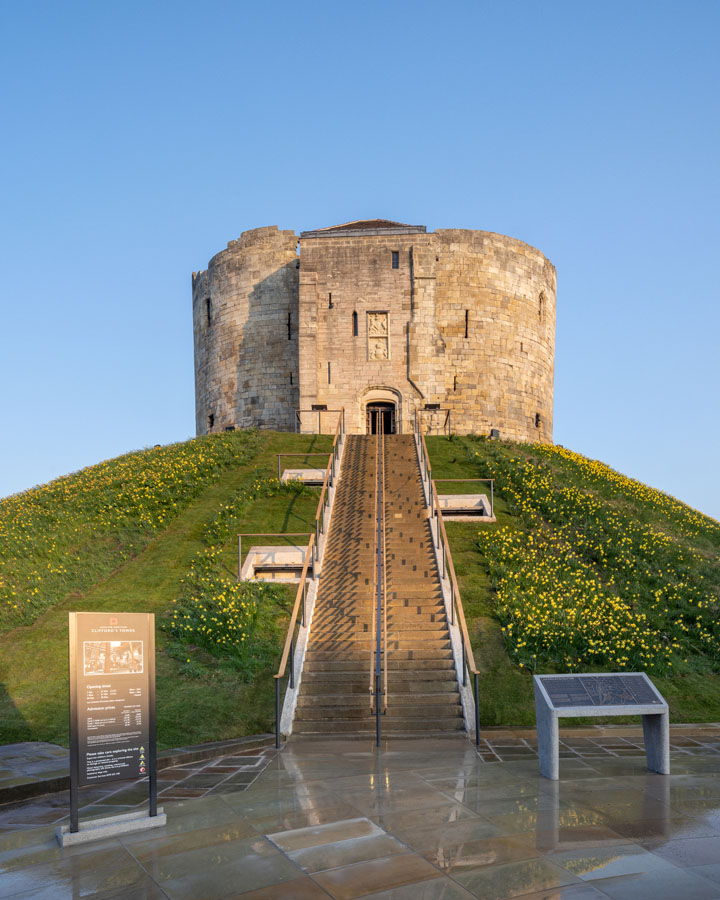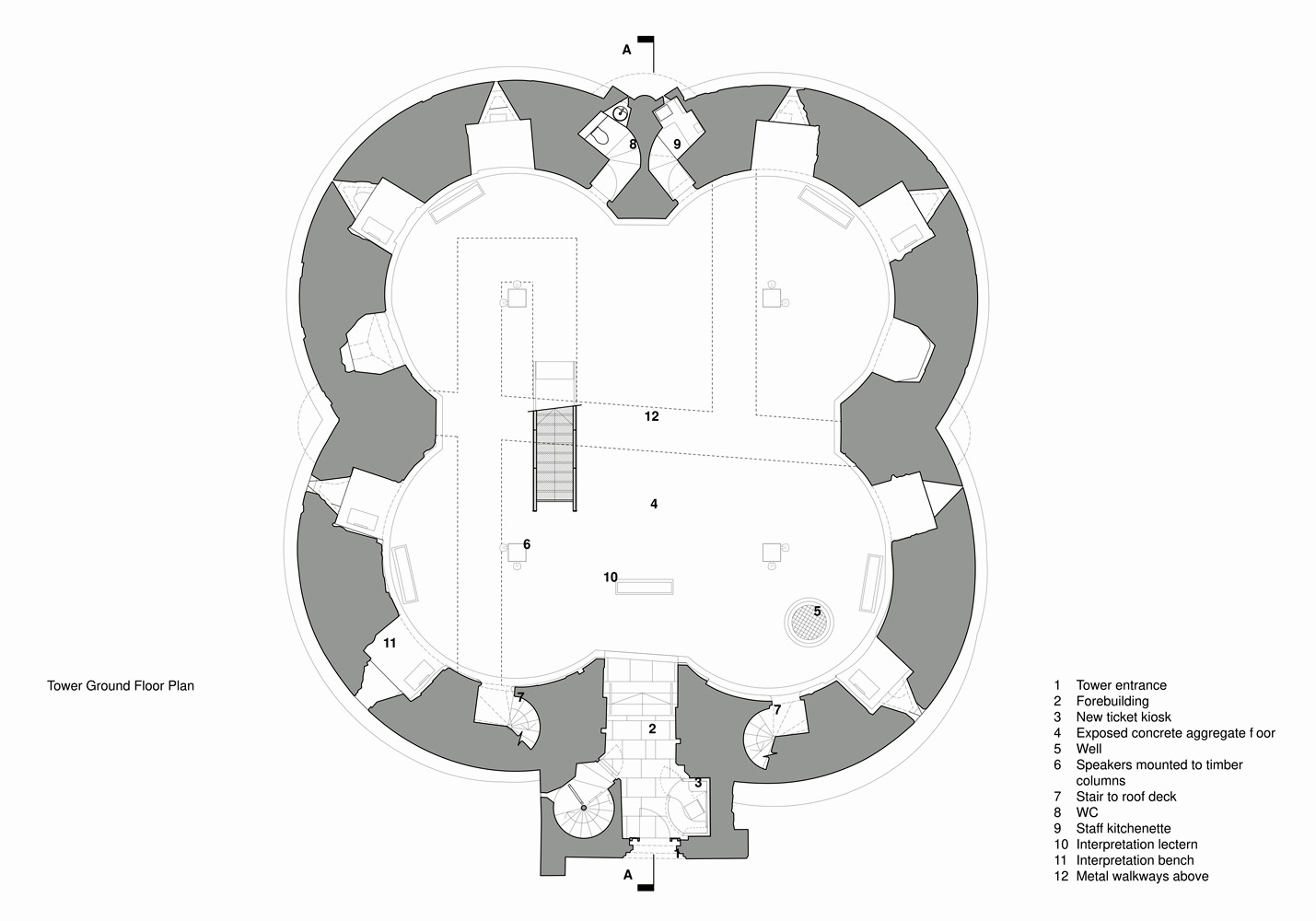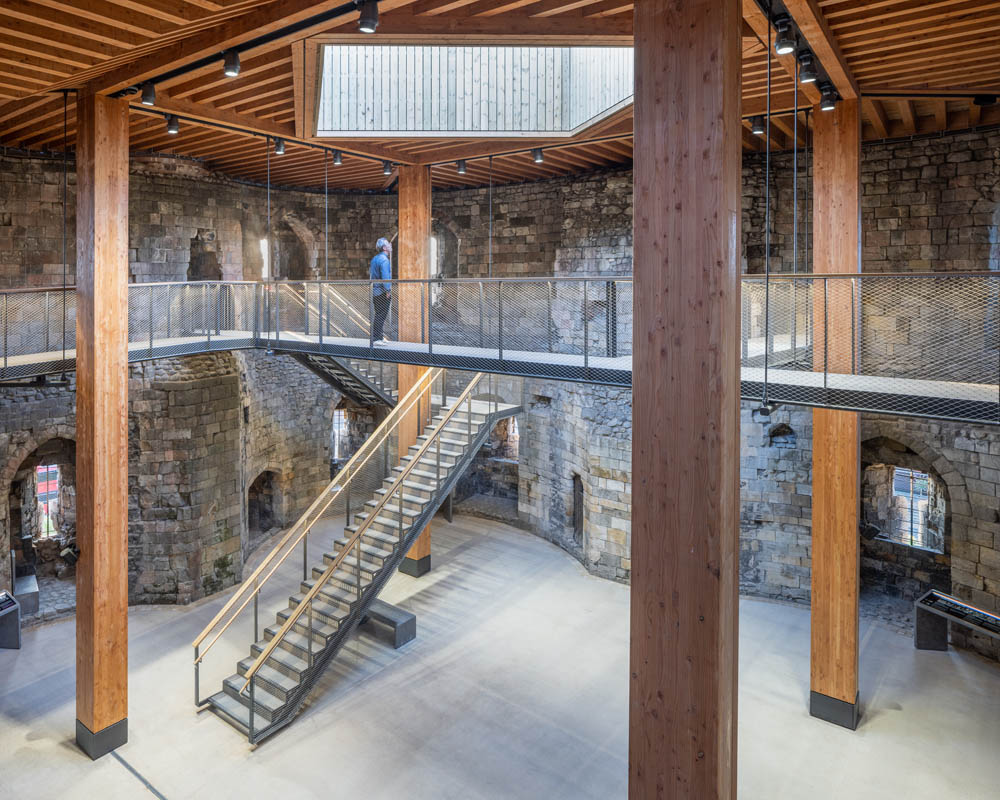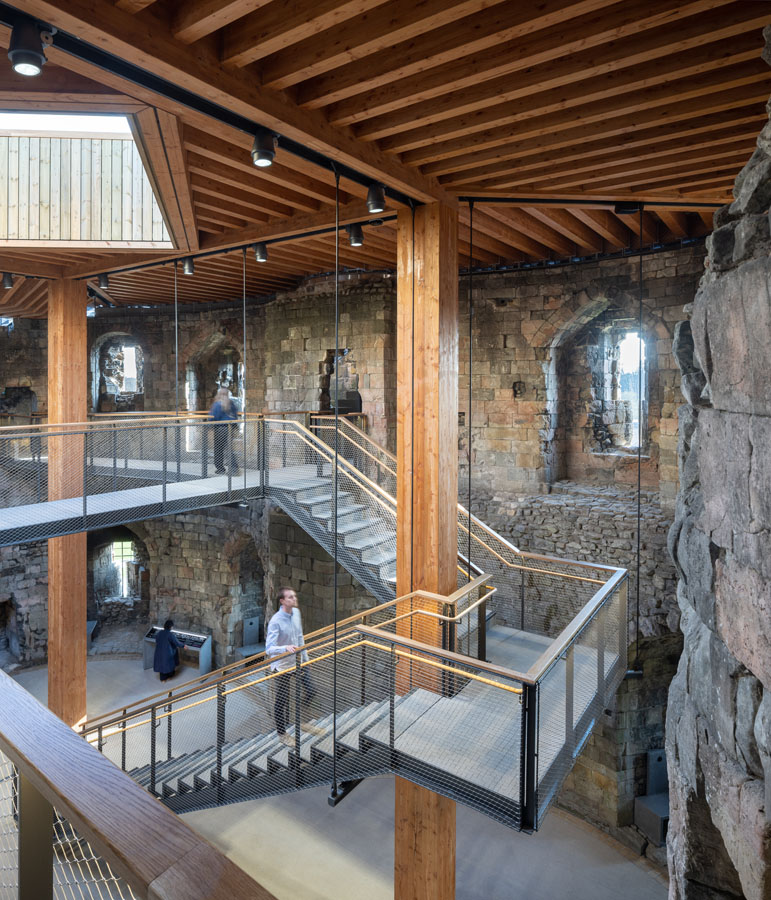Hugh Broughton Architects and English Heritage’s project to safeguard the future of Clifford’s Tower in York has completed, and will open to the public on 2 April 2022. The project, which was designed by Hugh Broughton Architects working with conservation specialists Martin Ashley Architects, includes vital conservation works as well as architectural improvements which enhance the visitor experience.

Photography: ©Dirk Lindner.

Clifford’s Tower crowns the earthwork mound raised by William the Conqueror in 1068. For centuries it was the keep and chief strongpoint of York Castle. At first, there was a timber tower here, where the most notorious event in the history of the castle took place in 1190, when the Jews of York, who had taken refuge in the tower, died in tragic circumstances.

Photography: ©Dirk Lindner.

The stone tower was built soon afterwards and was used as a treasury and royal exchequer. In the 17th century a fire destroyed the interior of the tower and the building was reduced to a shell. The mound at Clifford’s Tower was later cut back and a large retaining wall was built around it. In 1935, the lower slopes of the mound were reconstructed.

Photography: ©Dirk Lindner.

In addition to conservation works to the historic fabric, the project has made a series of improvements to the tower, with a particular focus on creating an inspiring and sensitively- designed interpretation scheme within the tower. Developed through an extensive process of public consultation, the design scheme features a new timber deck which partially covers the ruin and is supported on four soaring timber columns.

Ground Floor Plan.

The deck includes amphitheatre seating for group activity, with a series of lightweight walkways suspended from its structure which gives access to previously unseen first floor features and doubles the access to the roof level through restoration of two bartizan vices. The chapel has also been restored, with stonework cleaned, unsightly timber bracing removed, and the roof repaired and re-clad in clay tiles.

Section AA.
Access to the tower has been enhanced through improvements to the existing stair up the motte. Three resting places have been created, allowing people to pull off to the side of the stair, pause, and sit down. A newly enlarged public area at the base of the motte incorporates interpretation, accommodates an English Heritage-branded Piaggio tuk-tuk (auto rickshaw) for the sale of tickets and guidebooks, and offers a ground level place to engage with visitors, including those unable to ascend to the tower.

Photography: ©Dirk Lindner.


The project has been commissioned by a female-led team at English Heritage, headed by Andrea Selley, Rachael Baldwin and Ruth Haycock, and delivered by a female led-design team, with the project leads including Imogen Softley Pierce from Hugh Broughton Architects, Francesca Basso from Martin Ashley Architects, Faye Newham from Ramboll, Sue Preston from Preston Barber, Angela Drinkall from Drinkall Dean and Kirsten Heckmueller from RNJ.

Photography: ©Dirk Lindner.



Hugh Broughton, Director, Hugh Broughton Architects, said: “The existing fabric has been carefully conserved, and enhanced interpretation introduces visitors to the many stories associated with the tower and the wider castle precincts. The timber deck and suspended walkways improve access, introduce visitors to previously unseen historic fabric, allow more time for people to enjoy the spectacular views of York and complement the special character of Clifford’s Tower”.

Photography: Chris Isong.







